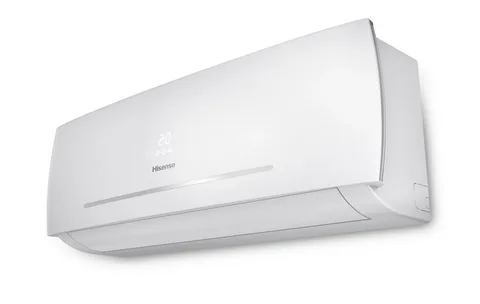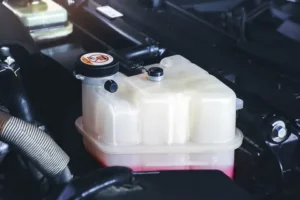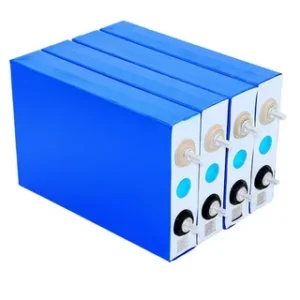In a world where energy efficiency and sustainability are more crucial than ever, the spotlight is shining brightly on DC inverter. These often-overlooked powerhouses transform how we harness and utilize electricity across various modern technologies. Imagine a future where your devices run smoother, consume less energy, and contribute to a greener planet—all thanks to direct current (DC) conversion! Join us as we dive into the dynamic realm of DC inverters and uncover their pivotal role in renewable energy systems, electric vehicles, and smart appliances. Get ready to unleash efficiency like never before—because when it comes to powering our lives sustainably, DC inverters are leading the charge!
Introduction to DC Inverters and their History
In a world that increasingly relies on technology, efficiency has become the name of the game. Amidst this quest for optimization, DC inverters have emerged as unsung heroes. These compact devices convert the direct current (DC) into alternating current (AC), which is pivotal in powering modern innovations. But how did we get here? The journey of DC inverters is marked by technological evolution and a growing demand for sustainable energy solutions.
As we read this blog post, we’ll explore what makes DC inverters essential players across various industries. From renewable energy systems to electric vehicles, their versatility knows no bounds. Join us as we explore the inner workings of these remarkable devices and uncover their transformative impact on our daily lives and future technologies.
Understanding the Basics: How do DC Inverters Work?
DC inverters are crucial in converting direct current (DC) into alternating current (AC). This transformation is essential for integrating renewable energy sources and powering various appliances. At their core, DC inverters use semiconductor devices. These components switch the DC voltage on and off rapidly. The result? An AC waveform emerges, ready to be utilized by standard electrical systems.
Pulse Width Modulation (PWM) is a key technique employed. By varying the width of each pulse, the inverter can effectively control the output voltage and frequency. This precision enhances efficiency and performance across applications.
Additionally, these inverters often include advanced features like maximum power point tracking (MPPT). MPPT optimizes energy harvest from solar panels under fluctuating conditions, ensuring that users get the most out of their installations. With such technology at play, DC inverters are indispensable for efficiently harnessing sustainable energy solutions.
The Benefits of Using Dc to Ac Inverter
DC to AC inverter, also known as power inverters or voltage converters, have become increasingly popular in modern technology. This device converts direct (DC) electricity into alternating (AC), allowing electronic devices to run on DC power sources such as batteries and solar panels.
One of the main benefits of using a DC to AC inverter is its flexibility and portability. With the rise of portable electronic devices such as laptops, smartphones, and tablets, having a reliable source of power while on the go has become crucial. Inverters allow these devices to be charged from various power sources, making them essential tools for travellers and outdoor enthusiasts.
Moreover, many industries are now utilizing renewable energy sources like solar panels and wind turbines. These energy sources generate DC electricity that must be converted into AC so that most electrical appliances can use it efficiently. DC to AC inverters make this conversion possible, making renewable energy more accessible and practical for everyday use.
Another important benefit of using a DC-to-AC inverter is its role in reducing energy costs. By converting low-voltage DC power from batteries or solar panels into high-voltage AC power used by most household appliances, inverters help reduce electricity bills significantly. This is especially beneficial for those living off-grid or in areas with unreliable grid infrastructure.
In addition to cost savings, inverters also contribute to a greener environment by minimizing the need for fossil fuel-based generators. As more people rely on renewable energy sources like solar panels and wind turbines coupled with efficient use through inverters, there will be less reliance on non-renewable resources.
Furthermore, using an inverter can improve the lifespan of electronic devices by providing a stable and clean power supply. Some sensitive electronics may get damaged if connected directly to fluctuating DC sources, such as batteries or solar panels, without proper regulation through an inverter.
Applications of dc to AC Power inverter in Different Industries
DC-to-AC power inverters have become essential components in various industries thanks to their ability to convert direct current (DC) into alternating current (AC). This conversion is crucial in modern technology, as most electronic devices and equipment operate on AC power. Let’s take a closer look at the applications of DC to AC power inverter in different industries.
1. Automotive Industry:
One of the main uses of DC-to-AC power inverters in the automotive industry is powering electric vehicles. These inverters convert the DC electricity from the batteries into AC electricity that powers the electric motor. They are also used in charging stations for electric cars, where they convert the AC power from the grid into DC power that can be stored in the car’s battery.
2. Renewable Energy Sector:
Inverters are crucial in renewable energy systems like solar panels and wind turbines. These systems generate DC electricity, which needs to be converted into usable AC electricity for homes and buildings. DC to AC inverters enable seamless integration of renewable energy sources with existing electrical grids, making them more efficient and reliable.
3. Telecommunications:
The telecommunication industry relies heavily on an uninterrupted power supply for its operations. In areas with unreliable or no access to grid electricity, inverters convert DC power from batteries or solar panels into usable AC power for operating communication equipment such as cell towers and base stations.
4. Medical Equipment:
Medical equipment such as X-ray machines, MRI scanners, and ventilators require a stable source of high-quality electricity to function properly. Inverters provide a clean and stable AC power source by converting the fluctuating DC voltage from batteries or generators into smooth sinusoidal waveforms required by these sensitive medical devices.
5. Animal Farming:
In animal farming industries like poultry or dairy farms, where there is no access to grid electricity, DC to AC inverters power lighting, ventilation systems, and other essential equipment. Inverters help reduce the costs associated with using generators while also providing a reliable source of electricity for the proper functioning of these farms.
DC to AC power inverters have become integral to modern technology, finding applications in various industries. From powering electric vehicles and renewable energy systems to ensuring uninterrupted power supply for critical operations in healthcare and telecommunication, these inverters have proven their efficiency and reliability in different sectors. As technology advances, it is safe to say that the demand for DC to AC power inverters will continue to rise in diverse industries.
Comparing DC Inverters to Traditional Alternating Current (AC) Systems
DC inverters and traditional AC systems serve distinct purposes in the energy landscape. While AC systems have dominated for decades, DC technology is gaining traction due to its specific advantages.
One key difference is efficiency. DC inverters convert direct current into alternating current with minimal power loss, making them ideal for applications requiring high precision and reliability. In contrast, traditional AC systems are often less efficient when converting energy over long distances. They rely on transformers that can waste energy during the conversion process.
Moreover, DC inverters are more adaptable to renewable sources like solar panels. Their ability to directly utilize generated power without extensive conversions enhances overall system performance. Maintenance also varies significantly between these two technologies. Typically, DC inverter systems require less upkeep than their AC counterparts due to fewer moving parts.
Common Misconceptions about DC Inverters and Their Efficiency
Many people believe that DC inverters are less efficient than their AC counterparts. This misconception is rooted in outdated information. Modern DC inverters boast impressive efficiency ratings, often exceeding 90%. Their design allows for minimal energy loss during conversion processes. Another common myth suggests that using DC inverters limits compatibility with household appliances. However, advancements have made it possible to connect a broad range of devices seamlessly.
Some worry about overheating and wear over time. Yet, quality DC inverters come equipped with thermal management systems designed to handle heat effectively. Lastly, the notion that all DC systems require constant maintenance is misleading. Many contemporary models operate reliably with little user attention required after installation.
Future Outlook for Dometic Inverter Technology
The future outlook for dometic inverter technology is promising, potentially revolutionising how we use electricity in our homes. As more and more households seek to become energy efficient and decrease their reliance on traditional power sources, the demand for innovative and efficient technologies such as DC inverters is only expected to increase.
One of the main reasons for this projected growth is the increased availability of renewable energy sources such as solar panels. DC inverters play a crucial role in converting the direct current (DC) energy produced by solar panels into alternating current (AC), which can be used to power household appliances. This makes it possible for households to generate their own electricity and reduces their dependence on traditional energy sources.
In addition, advancements in battery technology have also contributed to the rise of domestic inverter systems. With batteries becoming more affordable and efficient, they can now work seamlessly with DC inverters to store excess solar energy for later use. This means households can continue using clean and renewable energy even when no sunlight is available.
Another factor driving the future growth of domestic inverter technology is its potential applications beyond just powering homes. For instance, electric cars are becoming increasingly popular around the world and require an efficient charging system—something that DC inverters are well-equipped to provide. Additionally, industries such as agriculture and construction are exploring ways to incorporate DC inverters into their operations, further expanding their market potential.
Moreover, with governments around the world setting ambitious targets for reducing carbon emissions and promoting sustainable living practices, it is likely that incentives will be offered for adopting green technologies like domestic inverters. This would make them even more financially viable for households looking to reduce their carbon footprint while saving money on electricity bills.
Conclusion
Switching to DC inverter presents a compelling opportunity for both individuals and businesses. Their efficiency, reliability, and versatility make them an attractive option in a world increasingly reliant on modern technology. The ability to convert direct current into usable power without the losses associated with traditional systems can lead to significant energy savings. Whether you’re looking at HVAC systems or solar panels, DC inverters enhance performance while reducing your carbon footprint. As electric vehicles continue to gain traction, these devices are becoming essential components that propel us toward a more sustainable future.
FAQs
1. What is a DC Inverter, and how does it work?
A DC Inverter is an electronic device that converts direct current (DC) into alternating current (AC). This conversion process involves using power semiconductors, such as transistors and diodes, to constantly vary the frequency and voltage of the AC output. This allows for efficient regulation of electrical energy, resulting in significant energy savings.
2. What are the benefits of using a DC Inverter?
The main benefit of using a DC Inverter is its ability to regulate power consumption according to demand. This means that it can adjust its output based on the required load, resulting in lower energy consumption and cost savings. Additionally, DC inverters have a longer lifespan than traditional fixed-speed motors, making them more durable and cost-effective in the long run.
3. How do DC Inverters improve efficiency?
By constantly adjusting their output according to demand, DC inverters prevent the energy waste that occurs with fixed-speed motors. They also eliminate the need for frequent starts and stops, which can consume more energy and cause wear on equipment over time. This makes them particularly useful in applications requiring variable speed control, such as air conditioning units or refrigerators.




